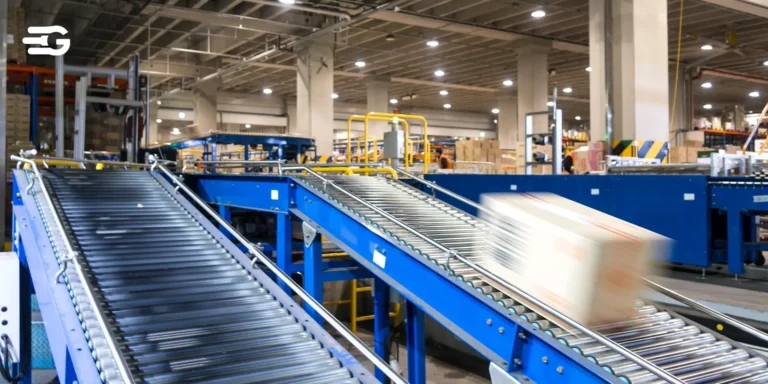Types of Supply Chain Models Explained
Choosing the right supply chain model is essential for logistics teams managing global operations. It directly impacts efficiency, cost management, and customer satisfaction. In a dynamic supply chain environment, aligning your model with your business needs is key.
A strategic model not only improves workflows. It also adapts to changes and keeps businesses competitive. Companies that select their models wisely can respond effectively to market shifts. This helps maintain operational efficiency.
Understanding Supply Chain Models
Supply chain models outline how a business moves products from suppliers to customers. These models help manage demand variability, inventory turnover, and market responsiveness. Choosing the right model aligns logistics strategies with operational needs. Factors like product type, market dynamics, and operational capabilities are crucial. A smart choice enhances efficiency, cost-effectiveness, and customer satisfaction.
Common Types of Supply Chain Models
There are several supply chain models that businesses can choose from, each suited to different needs and operational environments. Understanding their unique characteristics helps in selecting the most appropriate model.
Continuous Flow Model
The continuous flow model suits industries with stable demand and standardized products. It keeps production consistent and reduces variation. This model is common in automotive manufacturing and food and beverage.
Advantages: Predictable operations, efficient resource use.
Disadvantages: Low flexibility, risk from demand shifts.
Use Cases: Automotive manufacturing, food and beverage industries.
Fast Chain Model
The fast chain model helps companies get products to market quickly. It’s useful for industries responding to trends, like fashion and electronics.
Advantages: Fast market response, adaptable to trends.
Disadvantages: High costs, risk of excess production.
Use Cases: Fashion industry, consumer electronics.
Efficient Chain Model
This model focuses on cost-efficiency and works well in markets with predictable demand. It suits commodity products and large-scale manufacturing.
Advantages: Cost-effective, stable output.
Disadvantages: Not adaptable to sudden changes.
Use Cases: Commodity products, large-scale manufacturing.
Agile Model
The agile model is good for businesses needing flexibility and quick responses. It’s popular in high-end fashion and custom electronics.
Advantages: High customization, quick changes.
Disadvantages: Higher costs, complex management.
Use Cases: High-end fashion, custom electronics.
Custom-Configured Model
This model mixes agile and continuous flow approaches. It balances customization with efficiency. Ideal for computer assembly and custom vehicles.
Advantages: Customization with consistency.
Disadvantages: Complex coordination, higher setup cost.
Use Cases: Computer assembly, customized vehicles.
Flexible Model
The flexible model manages demand peaks and low demand. Best for seasonal products and event-driven industries.
Advantages: Scalability, flexible output.
Disadvantages: Unstable production schedules.
Use Cases: Seasonal products, event-driven industries.
Leveraging Supply Chain Visibility
Visibility is a critical factor in modern supply chain management. Having accurate, real-time data helps businesses make informed decisions and improves overall efficiency. Efficient supply chain management needs more than just the right model. It also needs real-time visibility and transparency. Complex supply chains need centralized systems to track shipments, inventory, and costs.
“GoComet tools provide end-to-end supply chain visibility with real-time container tracking, analytics dashboards, and automated reporting, enabling complete transparency across shipping operations.”
With GoComet’s tools, businesses cut manual tracking and boost accuracy. Data-driven insights combined with the right model lead to better performance and satisfied customers.
Selecting the Right Supply Chain Model
Choosing the right model is crucial for optimizing supply chain performance. By evaluating specific factors, businesses can align their strategies with operational needs. When choosing a model, think about:
- Product type and demand changes
- Market trends and competition
- Operational strengths and resources
- Customer expectations and service levels
- Cost factors and scalability
- Supply chain complexity and tech integration
Picking the right model helps businesses stay efficient and meet customer needs. Regularly reviewing your strategy keeps you ready for changes.
Conclusion
Selecting the right supply chain model requires a clear understanding of business needs and market conditions. Applying the right model helps optimize operations and enhance customer satisfaction. Supply chain models help businesses plan smarter. The right choice improves efficiency and responsiveness. Aligning your model with business goals and market demands makes a big difference. Using the best model helps boost profitability, customer satisfaction, and operational strength.
Check out our guides on Optimizing Supply Chain Efficiency and Agile Supply Chain Strategies for more insights.






